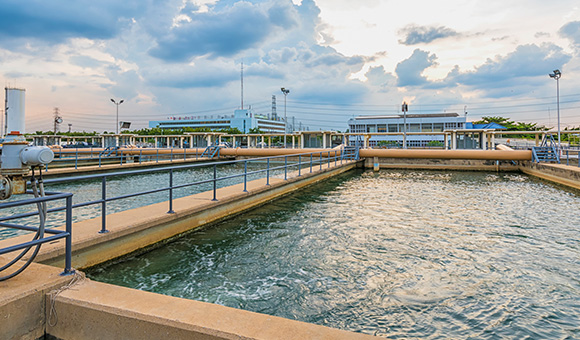
Strong oxidizing biocides such as sodium hypochlorite and chlorine have been used for decades to control microbiological activity in industrial water systems. Although strong oxidizing biocides effectively control planktonic microorganisms, they are unable to penetrate and control established biofilms caused by sessile microorganisms. Biofilms are a major cause of microbiologically influenced corrosion (MIC), under deposit corrosion (UDC), and reduced heat transfer efficiency for heat exchangers and other process equipment. Additionally, strong oxidizing biocides are highly reactive with organic and inorganic materials, causing many unwanted side effects, including increased corrosion rates, increased precipitation of heavy metals, reduced equipment performance, increased maintenance costs, increased risk of chlorine off-gassing, and increased levels of adsorbable organic halogens (AOX) and trihalomethanes (THM).
Biosperse chlorine stabilizers, a suite of proprietary chemistries, are used in combination with sodium hypochlorite to produce a patented, in situ stabilized active chlorine solution. The resulting solution effectively controls both planktonic microorganisms and biofilm in influent water, process water, and once-through and open recirculating cooling systems. The in situ stabilized active chlorine solution is safe and easy to use and does not cause any of the adverse side effects associated with using strong oxidizing biocides.
Biosperse chlorine stabilizers offer many benefits:
- Reduced corrosion rates
- Improved microbiological control
- Reduced precipitation of heavy metals
- Reduced halogenated organics
- Reduced operating costs
Biosperse chlorine stabilizers are broadly useful, with applications in pulp, paper, petroleum refining, chemical processing, mining, biorefining, power generation and municipal water treatment.
Automated Dosing and Control
Biosperse chlorine stabilizers are dosed using a proprietary monitoring and control system with state-of-the-art safety and control features that automatically adjust biocidal active production to correct for any variation in sodium hypochlorite quality. Key features include water flow control and safety switches; advanced leak detection and spill containment; and on-line, real-time remote monitoring and troubleshooting.
Application Technology
To obtain optimal results, Biosperse chlorine stabilizers should be applied in an intermittent fashion. To determine the optimal feed location for your system, your Solenis field representative will perform a detailed site survey. The recommended dosage strategy depends upon the type of system, the operating conditions, the nature and extent of microbiological contamination, the types of microorganisms, the presence of process leaks and the amount of reducing agents and process contaminants in the system.
More Information
If you have a question about Biosperse chlorine stabilizers or want to know more about the issues strong oxidizing biocides can cause in industrial water systems, ask a Solenis expert today.
